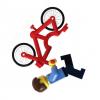Search the Community
Showing results for tags 'loader'.
Found 39 results
-
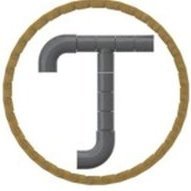
[MOC] 42167 skip loader truck
TechnicMOCer posted a topic in LEGO Technic, Mindstorms, Model Team and Scale Modeling
My alternative model of 42167 Mack LR set - skip loader truck. It features HOG steering and detachable container which can be loaded/unloaded. -

DOOSAN DL420-7 wheel loader
eric trax posted a topic in LEGO Technic, Mindstorms, Model Team and Scale Modeling
I think I can finally say that I'm back to building 100%. I've been wanting to build a wheel loader for many years, but this project always fell lower and lower on the list of things to build. When I created the mock-up of the technic mine I realized it was time to finally build a decent wheel loader. Choosing the specific machine I wanted was not difficult. I always like to stand out. There have already been a lot of yellow machines, so why not an orange one? That's how I decided to build the Doosan DL 420-7: I started building the model in September 2022 and finished it in June 2023. Of course, there were 4 months break at that time for other models. The primary task in the design of Doosan was to make the model as efficient as possible. In my opinion, it worked very well and this is the final result. When I started building I gave up dummy engine almost immediately. I preferred to use this space for massive axles with portal hubs and a solid frame. The Doosans' drive is powered by the XL motor. Above it, there are two motors: L-motor responsible for turning and M-motor moving the bucket. At the beginning of the work I used Sbrick and a Lego rechargeable battery box. During the 16-hour tests at the exhibition, I decided that for even better effect and efficiency I would use Buwizz. Thanks to this, the model has space and the possibility of three control configurations. Sbrick, Buwizz 2.0 or CADA JV1010. The last L-motor lift the arm and it's located behind the front axle. When I made sure that the model works as I expected and removed a few minor defects that were revealed during the tests I started to make building instructions. In addition to a solid frame and pretty well working mechanisms, I wanted the model to look good. The large frame made it difficult for me. In some places I used optical illusions using black bricks. The shape of the arms is bit different compere to the real machine, but this was due to the geometry of the bucket stabilization system. I am happy with the good looking fenders. The rear ones should open but I chose a solid mount. The engine cover have a specific shape. The machine is partly orange, so I had to simplify its details a bit and make possibility to easily buy all the elements in this color. My favorite detail is the radiator grille and counterweight. As you can see, it has a tile on three sides and is mounted on pins. The side parts are build in creator expert style. An additional nice detail is the cabin, which can be removed as one part from the model. To increase the realism, I used RC - MIL SPEC 1.9 ZXL tires that perfectly match the lego technic rims. Below you can see photos and video. There is also a link to the building instructions which also includes motor wires. I spent 250 hours on the presentation and instructions, stickers (with Marton) and I'm curious if you'll like it :) Building instructions: https://reb.li/m/154471 Sticker pack: https://forwartsticker.com/termek/fws95-moc-154471/ Photo gallery: https://bricksafe.com/pages/erictrax/doosan-dl420-7 Video: -

Three Wheeled Loader Idea
weavil posted a topic in LEGO Technic, Mindstorms, Model Team and Scale Modeling
I present to you the "3" wheeled loader. The back wheels act as one, It was an idea spawned from a mix of the Bell 3 wheeled sugarcane loader and BM-VOLVO LM loader, so a three wheeled loader. Took me a little longer to build then I care to admit, because of the lift arms and the not having the hoses kink or bind. It's nothing special as far as build goes. It might look better if I had a little smaller bucket. The truck used for the demonstration is a slightly modified version of grego18's on Rebrickable. More pictures HERE.- 14 replies
-
- wheel loader
- loader
-
(and 1 more)
Tagged with:
-

[TC22] Mini RC Tracked Loader
SaperPL posted a topic in LEGO Technic, Mindstorms, Model Team and Scale Modeling
So I've been contemplating what to build for the contest as the volume restrictions is something that should fall exactly in my area of expertise, but with RC allowed, it got a bit complex. To fully handle a crane or excavator you need 5 or 6 motors, so either two hubs or something like buwizz 3.0 which supports 6 motors, and I'm not really sure if I'll be able to fit all that perfectly within the specified volume while not making it a messy build. So I decided to stick to stuff that I can power with a single hub, and I love the ease of use of physical remote from CADA so I ended up deciding to go with a tracked vehicle + two mechanical functions, so after looking at multiple options I decided to pick a tracked skid-steer loader - a bobcat: I like this one because it has an interesting geometry of the arms, which I expect to be there in order to prevent the bucket getting closer to the cab while the arms are getting raised. I yet have to test this theory. Here's a concept / design so far: I tested the geometry of the arm against keeping the bucket at same angle while the arm is changing its angle, assuming the lever holding liftarm over the arm has fixed angle, and it works more or less. I don't have a bucket yet, and I've got to figure out the driving connection for it that has a significant gear reduction as well as it should have some safety like clutch gear, but I'm not sure if it is a good idea considering weight of the bucket. I'm not 100% sure that I'll be able to go with the design of the arm that is supported by that liftarm to move forward/keep horizontal position of the bucket, especially because of the requirements for the bucket tilt lever connection to the motor. Additional note here is that the tracks are shaped in a way that rear gears one exactly above each other because I couldn't achieve optimal track tension in other configurations and also I would have to make more space for the attachment of linear actuators behind the tracks and it would complicate the base structure. Finally I might end up with arms hitting the cab, so maybe I'll have to move them by 1 stud to the sides, which would made the proportions weird, but I don't think I'll be able to shrink the cab without showing a mess of cables.- 35 replies
-
- skid-steer
- loader
-
(and 3 more)
Tagged with:
-

42133 - Telescopic Loader
Ngoc Nguyen posted a topic in LEGO Technic, Mindstorms, Model Team and Scale Modeling
From promobricks.de: The blue and white telehandler is also ideal for beginners. It consists of 143 parts and costs 9.99 euros . A small palette is also included in the set. This set should also have a B-model again. Set number: 42133 Designation: Telehandler Number of parts: 143 Release date: March 01, 2022 RRP: 9.99 euros- 67 replies
-
- 42133
- telescopic
-
(and 1 more)
Tagged with:
-
Alright, I'm a little late to the game, but I want to play. I confess I am still on the fence about doing a front end loader, so I'll give my draft one more go this weekend, and make a decision about if to move forward with it. But, ever since @Jundis started his Mecalac 12MTX WIP, I, like many of you I'm sure, have been spending a lot of time on the Mecalac website. They have a lot of fun little machines. Each would make a fun little project. For this contest, I wanted to see if I could do a little skid excavator. I finally got a little time to build this week, and here is what I have so far. It's pretty basic (and sorry I burned out my photo lights today), but it is a good start to see what I can fit. The MOC is currently 26 modules long, 20 modules tall, and 17 modules wide which equals 8,840 cubic modules/studs. I planned the project at 29x20x17 (9,860), so I should be fine. I suspect the MOC will get a little longer and taller, so it is good I have a little bit of space to expand if needed. Currently I have the following functions, all of which are manual: Front Plow up and down Slewing from HOG Boom 1 up and down Boom 2 up and down Boom 3 in and out Bucket scoop Interchangeable bucket I have a lot of room in the back, so I hope to do something else with that, and the cabin will have a door or something. Everything right now is a rough placement, but the movement of the boom is acceptable, so the pivot points might be effectively "fixed" at this point. We'll see where this goes....
-
My entry for TC22: Wille Loader Based on Wille Machines 35L x 13W x 17H = 7735, stud^3 Features: - Drive (L-motor) - Articulated steering (M-motor + 2x linear actuator) - Bucket lift (L-motor) - Bucket tilt (L-motor) - Front and rear lights (2x LED) - LiPo-battery - 2x IR-receiver Video: More photos: Rebrickable page: https://rebrickable.com/mocs/MOC-113292/paave/wille-loader/ Sorry for being late, got really lost in time. Thanks the admins for letting me join anyway
-
Hi, It's my first time to join the Eurobricks Contest. When I read the details of the TC22 Contest, this MOC (CAT Skid Steer Loader) was already WIP for months. My last tune is to tackle the size restriction (10000 cubic studs). Finally it's done and the main features are: - Total no. of pieces is around 900 - Around 1/16 to 1/17 scale; works well with the 42114 Volvo Articulated Hauler - 4WD with a modified transverse subtractor by Sariel (http://sariel.pl/) - Requires a BuWizz 1.0/2.0 or CaDA or Mould King remote battery hub - PF L Motor for the main driving - PF M Motor for the steering - PF M Motor for the bucket lifting - PF M Motor for the bucket tilting - Movable cabin - Bucket is swappable to a pallet fork or a larger bucket - Detailed cockpit and driver seat The size is 20.5 x 17 x 28.5 = 9932.25 cubic studs More pictures at: https://www.flickr.com/photos/124502100@N04/albums/72177720299363293 Video uploaded:
-

Bobcat S130
Brick_Builder19 posted a topic in LEGO Technic, Mindstorms, Model Team and Scale Modeling
This is a realistic version of the Bobcat S130. This LEGO TECHNIC model built for 1:14 in scale. Functions: moving piston working lift arm tipping bucket Dimensions: long: 230mm wide: 115mm high: 150mm (with bucket lowered) Bricks of the set: about 670 piece Look at the other pictures and If you like this model please support on the LEGO IDEAS side. Link: LEGO IDEAS/Bobcat S130 Thank you for watching and any support! -

[MOC] Heavy Duty Skid-steer Loader
JLiu15 posted a topic in LEGO Technic, Mindstorms, Model Team and Scale Modeling
Experimental MOC combining Mindstorms Robot Inventor and Control+. Features drive, backing alarm, arm elevation, bucket tilt, and a pallet fork alternate attachment with manually adjustable fork width. Functions/features: Drive (4x medium angular motors; 1 per wheel) Arm elevation (C+ L motor) Bucket tilt (C+ L motor) Manually adjustable fork width (on pallet fork attachment) Backing alarm Ever since I had heard that the new Mindstorms Robot Inventor is cross-compatible with Control+, I made a goal of creating a MOC combining them. A skid-steer loader seemed like a good subject to start for me - I wanted the drive to be as direct as possible, without connecting the wheels on one side with gears to a single motor. This meant 4 motors for the drive and 2 motors for each of the arm functions - perfect for the 6 ports on the Robot Inventor hub. The building process started with a base for the model - 4 medium angular motors each connected to a single wheel via a planetary hub. The motors were sandwiched between 2 11x15 Technic frames, creating a robust structure. The Robot Inventor hub is placed behind this part, and the C+ L motors for the arm functions are located above the drive motors. The chassis was kept as flat as possible with everything kept low to lower the center of gravity. Just in front of the Robot Inventor hub are two gear trains that transfer drive to the arm elevation and bucket tilt functions. Thanks to the use of planetary hubs, the model had plenty of torque and is able to climb some steep slopes without any issues, as shown in the video. Aesthetics wise, the model has a simple yellow/black color scheme. My original inspiration for this model was the CASE SV340, so the color scheme had some resemblance to that. Building the bodywork was quite discouraging at first due to it feeling like a building a box on wheels, but the model's looks really came together as the arms and rear body panels were installed. I also used plates and tiles to cover up bare pin holes and make the model look more finished, especially on the roof but also in other areas like the front windshield pillars and the top of the arms. Additionally, the model includes a handful of new 2021 panels, such as the small 3L curved panel and the 3x7 flat panel. As for accessing the Robot Inventor hub, there are 2 discreet switches in the bottom rear of the model that press the power and Bluetooth buttons on the hub. As everything is done from my iPad after powering it on and connecting it via Bluetooth, I don't have to look at the screen or press the left/right buttons. The status sounds from the hub allow me to know if the hub is powered on, connected, or powered off. As for controlling the model, I created a simple control profile in the Robot Inventor app using its code blocks. Two sliders control drive, and the arm functions are controlled using buttons. Additionally, a backing alarm sounds when driving in reverse. This feature is only controlled by the left slider, as I found that controlling it with both will essentially cause two backing alarms to play over each other. One issue I had is that the drive motors often don't start all at once - there'd be a noticeable delay in one or more of the motors. The C+ motors for the arm functions, however, work fine. I'm not sure what causes this, but this will definitely be something to consider for my next Robot Inventor/C+ hybrid MOC. Overall, I'm decently satisfied with this MOC. It was an interesting experiment in combining Robot Inventor and C+ that largely went according to plan. As someone who builds Technic MOCs, the new Robot Inventor hub is far better than the EV3 brick - it's got much better form factor (it's even a stud lower than the C+ hub), uses rechargeable batteries and is therefore much lighter, and has 6 ports that aren't restricted to motors or sensors. The only downsides IMO are the color (as teal doesn't blend well with most colors in Lego Technic) and the bright screen, but that can be easily covered up as I've done here. I definitely have plans for more Robot Inventor/C+ hybrids in the future, whether that be a Robot Inventor hub MOC with C+ motors or a C+ hub MOC with Robot Inventor motors. Photos: Video: -
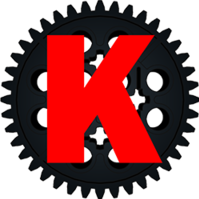
[MOD] Motorized Tracked Loader 42094
KirTech LAB posted a topic in LEGO Technic, Mindstorms, Model Team and Scale Modeling
Hi! I'm glad to present my motorized modification of 42094 set. It has six remote controlled functions with two S-bricks. Here is exemplary part list: And here is short review and functions demonstration: Photos in high resolution: https://www.flickr.com/photos/141718063@N06/albums/72157705982003774 Thanks for watching!- 12 replies
-
- 42094
- lego technic
-
(and 2 more)
Tagged with:
-

[WIP] Heavy Duty Skid-steer Loader
JLiu15 posted a topic in LEGO Technic, Mindstorms, Model Team and Scale Modeling
Hey guys, here's a new MOC I'm working on. This MOC will be an experiment in combining the new Mindstorms with Control+ to control 6 motors with a single hub. It will be powered and controlled by the new Mindstorms hub, with 4 angular motors for drive (1 per wheel) and Control+ motors for elevation and tilting. With the new Mindstorms having much better form factor than EV3, I anticipate it being much easier to use in my MOCs than EV3. The loader is inspired by the CASE SV340 skid-steer loader. However, some parts of that vehicle, especially the rounded section of the arms towards the rear, will be difficult to model with Lego pieces, so I won't model this after any specific skid-steer loader. So far, I have the chassis built. It's a compact chassis made of 4 angular motors sandwiched between two 11x15 frames. The wheels are driven through planetary hubs, giving it lots of torque. This gives me a good starting point to attach other elements, such as the arm mechanisms and the Mindstorms hub. This will definitely be an interesting build. When I learned that the new Mindstorms is cross-compatible with C+ thanks to both being in the Powered Up ecosystem, I knew I just had to make a MOC combining them. If all goes well, I'll definitely be experimenting more with the new Mindstorms in the future. If you have any suggestions for me, please let me know. Photos: -

42116 Skid Steer Loader [VIDEO REVIEW]
Sariel posted a topic in LEGO Technic, Mindstorms, Model Team and Scale Modeling
Two LEGO Technic sets are down to $9.99 price range this year. Here's the more functional one of them: -

[MOC] Tracked Loader
JLiu15 posted a topic in LEGO Technic, Mindstorms, Model Team and Scale Modeling
A simple tracked loader model with Control+. Features subtractor drive, arm elevation, bucket tilt, and lighting by Brickstuff. Functions/features: Subtractor drive Arm elevation Bucket tilt Lights (Brickstuff LEDs) Photos: Video: -

[WIP] Tracked Loader
JLiu15 posted a topic in LEGO Technic, Mindstorms, Model Team and Scale Modeling
I'm doing something simple this time after building two complex MOCs. Given that I'm busy with college right now, this should be a pretty manageable project for me. It'll be a simple tracked loader model with subtractor drive. I've already got the subtractor mechanism built, and it'll likely be the rear sprockets that'll be driven. The propulsion motor is a C+ XL and the steering motor is a C+ L. The C+ hub will likely sit in the front of the chassis towards the bottom (assuming it's the rear sprockets that'll be driven) and bucket elevation/tipping will be a C+ XL and C+ L, respectively. As for the bodywork, I'm planning on making it bright light orange with the pieces from the 42099 set. If you have any suggestions for me, please let me know. Photos: -

[WIP] Volvo L350H
grego18f posted a topic in LEGO Technic, Mindstorms, Model Team and Scale Modeling
Hi, I recently went back to Lego after a while and have decided to try replicating the new Volvo L350H wheel loader. This MOC is meant to fit the scale of my improved Mack Anthem (dimensions corrected): So, it is roughly 1:22 scale. The finished product will be red (yeah, another red loader) and will be equipped as the one above.All of the functions will be manual, except the arm movement operated thanks to Power Functions. I have obviously begun by the front end of the loader. This was quite hard for me to put all the functions in, as the quasi-vertical cylinders, while keeping proportions correct. The front is quite robust, and functions run smoothly. I think I manage to get a correct Z linkage (see photos). I am now building the rear part of the loader. It will have a 42078 inspired engine as I think the Lego cylinders are way too big for this scale. In addition, there will be a pendular axle and easy battery replacement. Mechanical functions will be operated by an L motor via gearboxes. In the following photos, you can see how I progressed. At this stage, there is mainly beaming to delimit the spaces (cabin, trunk, etc). At first, I wanted to put two two-way gearboxes, but it resulted that I have not enough room because I am limited to 7 studs wide in most parts of the loader (this is partially due to the 94.8 wheels and scale). I ended up with a simple gearbox... Be aware, the gears are not held properly, but I just wanted to show the routing. This one is meant to reduce the number of gears and thus maximize lifting capacity. https://bricksafe.com/pages/grego18f/mack-granite/volvo-l350h If I submit this loader at its early development stages, this is to obtain your feedback. I really think there is room for improvement (and maybe two-way gearboxes!). So, any suggestion is welcome. At the same time, I am reworking the lower central articulation. In the previous iteration, I realized there would be 2 studs ground clearance. That is why I ended with the actual design (allowing 3 studs ground clearance). I am not yet satisfied with the connection because it limits the lateral movement of the U-joints… That’s all for now ? -

[REVIEW] 42094 - Tracked Loader
Jim posted a topic in LEGO Technic, Mindstorms, Model Team and Scale Modeling
REVIEW - 42094 - TRACKED LOADER INTRODUCTION Looking at the entire range of 1H 2019 models, this model seems to be the one packing the most functions. Your milage may vary, but yellow "construction-ish" vehicles are always welcome to me. And this one looks particularly unusual and interesting. Let's find out what it is all about. This review might be less detailed than usual, but time was limited. Sorry about that. I do hope you enjoy it anyway! PICTURES Pictures can be clicked to view hi-res versions. More pictures can be found in my Flickr album. DISCLAIMER This set has been provided by the CEE Team of TLG. It's not my goal to promote this set. It's my goal to give you an honest opinion about it. Therefore, the opinion in this review is my own and is in no way linked to TLG. SET INFORMATION Number: 42094 Title: Tracked Loader Theme: Technic Released: 2019 Part Count: 827 Box Weight: 1095 gram Box Dimensions: 38,0 cm x 26,0 cm x 7,0 cm Set Price (RRP): € 59,99 Price per Part: € 0,073 Links: Brickset, Bricklink THE BOX CONTENTS OF THE BOX The box contains: 1x Booklet 1x Sticker sheet 8x Unnumbered bags BOOKLET STICKER SHEET BAGS HIGHLIGHTED PARTS PANELS These panels are new in dark bluish grey. The also appear in the Getaway Truck. 20T DOUBLE BEVEL GEAR WITH CLUTCH This gear first appeared in the Bugatti Chiron and it's good to see it pop-up in another set. Quote from the Chiron review; it's basically the same as the regular 20T bevel gear, but it has a pin hole, instead of axle hole. And it has clutches on both sides. PART LIST The part list for the 827 parts. THE BUILD The chassis already shows some of the functionality in this set. One of the rear axles is connected to the mini linear actuator and the other is connected to the large turntable. The axles are extended to outside the bodywork. You can also see the manually operated winch. The cabin is placed on top of the big turntable and can be rotated 360 degrees. That is one mean looking grabber on the boom. The undercarriage for the treads. You can see two springs, but they are not used as conventional suspension. They are used to put pressure on the sprockets. COMPLETED MODEL After adding the treads and connecting the chassis to the undercarriage, here's the final model. Two logs are included. Brutalis does look brutal. What I like most, is the design of the cabin. And I love that it can rotate freely, without any limits. This picture shows the cabin 180 degrees rotated. At the rear you can see the lever to switch between "Rabbit" and "Turtle" winch modes. Not that there is much difference between the two modes, but I like this added detail. After all, that's what Technic is all about. The bottom view of the undercarriage and chassis. Here you can see the front of the cabin, which looks stunning. As I said before, the vehicle doen't have suspension. It simply looks that way because of the springs. The rear view showing the winch, and the locking mechanism at the bottom right. The winch is operated by the 12T bevel gear on the right. B-MODEL The B-model looks promising. Could have been the main model. SUMMARY This medium sized set perfectly shows what the Technic theme is all about. It combines the looks with a handful of nice features. It does not have interesting new parts, but the features and aesthetics make up for this. This set definitely gets my nod of approval PROS Great aesthetics Rotating cabin via 12T gear (360 degrees) Raising and lowering boom via 12T gear Manually operated grabber Operating the winch via 12T gear Switching between two winch modes CONS Nothing really, maybe lack of actual suspension SCORE How do I rate this set? 8 DESIGN I love the cabin and overall aesthetics. 8 BUILDING EXPERIENCE Enough functions to provide a fun building experience. 8 FEATURES Packs enough features to make it interesting. 7 PLAYABILITY The treads limit playability on smooth surfaces. 7 PARTS Not too many interesting parts. 8 VALUE FOR MONEY Genuine Technic set for a reasonable price 7,7 GENUINE TECHNIC SET FINAL WORDS Thanks you for reading this review. All pictures can be found here. -
REVIEW - 42081 - VOLVO CONCEPT WHEEL LOADER ZEUX INTRODUCTION Cranes, forklifts, cars....can we please get something different for crying out loud?! Well....here it is, something different. Of course, one can argue that this is yet another a front loader, and technically they might be right. But it is a unique in a way. Volvo and TLG make the most of their ongoing collaboration and present us the ZEUX, an Autonomous Concept Wheel Loader. An autonomous car (also known as a driverless car, self-driving car, and robotic car) is a vehicle that is capable of sensing its environment and navigating without human input (source wikipedia). This boils down to the front loader being capable of navigating without human input, therefore lacking the cabin. In order to perfectly sense the environment, it uses a drone sidekick! Some people think this thing is as ugly as....an autonomous concept wheel loader, but I will tell you straight away I absolutely love it. I love the concept, I love the looks and I love the fact that TLG and Volvo actually made a Technic set for this vehicle. And that's that for an objective review. Of course, I will try to be objective in my review, but I won't hide the fact that I am very enthusiastic about this model. Let's deploy the drone and....grab a beer, since this thing will be driving itself. If you see this icon, you can click the image on the left or right side of the image, to cycle through alternative images. PICTURES Pictures can be clicked to view hi-res versions. More pictures can be found in my Flickr album. DISCLAIMER This set has been provided by the CEE Team of TLG. It's not my goal to promote this set. It's my goal to give you an honest opinion about it. Therefore, the opinion in this review is my own and is in no way linked to TLG. SET INFORMATION Number: 42081 Title: Volvo Concept Wheel Loader ZEUX Theme: Technic Released: 2018 Part Count: 1.167 Box Weight: 2,33 kg Box Dimensions: 57,5 cm x 37,0 cm x 11,1 cm Set Price (MSRP): £ 109.99 / $ 139.99 / € 119,99 Price per Part: £ 0.09 / $ 0.12 / € 0,10 Links: Brickset, Bricklink THE BOX The front shows the model with its flying sidekick. The background shows a pile of sand and behind that a skyline with scryscrapers. Apparently, this vehicle is not only meant to be used in remote mining facilities, but also in urban areas. The bottom right tells us the vehicle measures 59 cm in length. If you don't own the 42030 - Volvo L350F Wheel Loader, but you do want the big bucket, now's your chance. You will get four nice big Claas tires with it, in case you missed those. So, this set might be interesting enough for the unique parts alone. BACKSIDE The back is divided in two sections, a top section for the main model and a bottom section for the B-model, another Volvo Concept, called the PEGAX. Needles to say, I am more enthusiastic about this alternate model, than the one for the Rough Terrain Crane. I actually quite like this one, but more on that later. CONTENTS OF THE BOX This box contains: 1x Sealed pack with booklet and sticker sheet 4x Tires 1x Big bucket 1x Bag with rims, actuators and gear rack housing 9x Unnumbered bag BUCKET AND TIRES I didn't think to see another set with the big bucket, but here it is. And four Claas tires, which are turning into a common presence in my collection. I absolutely love these bad boys and I sure hope TLG will some day release a smaller version as well. RIMS AND ACTUATORS A bag containing four rims, two linear actuators and a gear rack housing. BAGS A total of nine numbered bags. HIGHLIGHTED PARTS I was about to show the pictures of the bucket and rim again here, but that's rather useless, since I already posted them in the content section. Other than those parts, there aren't any new or interesting parts. I can hightlight the propellors, but that's about it. 7 BLADE PROPELLOR This propellor in flat silver isn't very rare, but you don't see it every day either. Comes in seven other sets. PART LIST Two pages showing the 1.167 parts. THE BUILD We start by building the front of the chassis. An interesting technique is used near the gear rack. The white part behind the 12T Gear is not a 1L connector. It's actually a 2L Liftarm with Pin and Axle. It rotates between two 5L thin liftarms. I could be mistaken, but it's probably just for proper alignment of the front and rear wheels. Here's a better view of the 2L Liftarm. I should have taken a better picture. REAR The rear wheels are connected to this assembly. Both the front and rear wheels don't implement shock absorbers or any other form of suspension. When you operate the final model, you are inclined to push it down to test the suspension. Unfortunately, to no avail. I reckon autonomous vehicles don't need suspension BOOM This is the boom which will connect to the bucket. Operated manually via a Linear Actuator. Usually manual operation and LA's don't combine very well, because it makes operating the functions very cumbersome. I wonder if this is the case for this vehicle as well. And the boom connected to the chassis. This is actually turning into some sort of vehicle. Feels more like an excavator than a front loader, but that will probably change in a bit. Next we are going to build the.....the.....uhmmm......what is it that we are building here?! It does seem to be sliding out. Ahhh here it is, the....uhmm.....the.....counterweight I presume. This entire big block can slide out to compensate for the weight of a filled bucket. T = F x L comes to mind. Looking at the left image, you see three (six, if you count the other side as well) panels with stickers, red and green lights and "chromed" grills. A couple of steps further down the road you will cover them with other panels (image on the right) and you will never see those decorated elements again. Is this a way to sneak in some parts for the B-model, which uses these panels in a more prominent way. Either way, I was hoping to be able to see these panels in the A-model as well. Ohh wait, you actually can see the panels inside this big paper weight At the rear you can see the 12T Gear, which is not the Hand of God steering, but it is used to move the weight back and forth. The rear is almost done now. We only need to add the antenna and the drone. I am not sure why the drone is positioned like it is, because it is not able to fly off by itself. The antenna is blocking one of the four propellors. I'd say, move it a couple of studs to the front. After adding some panels, the wheels and the bucket to the boom, the Zeux is finished. I enjoyed building this vehicle. It's not that different from a regular Front Loader, but it does have some unique elements. The usual leftover parts. COMPLETED MODEL Of course, it is a matter of personal taste, but in my opinion this vehicle looks awesome! I love the Tech-look with the black and yellow color scheme. I also love the orange accents to highlight important and/or moving parts, like railings, footsteps, etc. And I also love that TLG (and Volvo) went all out and said....let's do this! This collaboration is proving to be very fruitful. Here is video with some background information on how this project started. A cool fact is that kids actually helped shape this model and made some design decisions. The boom has been properly finished with panels at the right place. Feels solid. Operating the functions manually works better than expected. They are actually quite responsive. Here's the list of implemented functions: Four wheel steering Raising/lowering the bucket Raising/lowering the boom Raising/lowering the chassis Extending/retracting the counter weight The three raising/lowering functions are operated by turning the 12T gears, all located near the front wheel. An interesting fact is that the antenna at the back is actually an eye. You would think it is used to look at the environment, but it's primary function is to interact with people walking near the vehicle. By looking at the eye you can see that the vehicle has seen you. The following video gives you some insights: The back looks even more "Techy" than the front, with the drone and the antenna. Click on the image to raise and lower the chassis. Granted, the looks of this vehicle are relying heavily on the applied stickers. It will probably still look cool without them, but you would lose lot of the details. The front loader in attack mode. Ready to strike There has been some debate about the reason to raise and lower the chassis. At first I agreed that ground clearance was a logical reason, but the axles are still near the ground, so that doesn't make sense. Therefore, I think it has to do with transporting the vehicle. If you put this on a truck it will be quite high. Lowering the chassis will solve this issue. And it can be used to change the angle of the boom without moving it. Not sure if this is an actual purpose, but maybe it doesn't cost as much power, since the arm is longer. Just guessing here. And a final image from the left rear of the vehicle. B-MODEL I haven't been able to build the B-model, so I have no idea how the build is. However, by looking at the picture I have a pretty good idea. It is an odd looking vehicle, but at least we get to see the six grey panels Again, one can discuss the looks. It's not the best looking vehicle I have ever seen, but for an autonomous vehicle, it does what it does, haul a payload. I am not entire sure why this vehicle needs to adjust its ride height. Maybe to prevent from the load falling out of the bed. Anyway, I will most likely get a second copy of this set and build this PEGAX hauler. For me, it's two thumbs up for this alternate model. SUMMARY At the beginning of the review I mentioned that I was very fond of this model. Well, that didn't change upon completing the build. I like everything about it. And I find it particularly interesting, and audacious, that TLG and Volvo actually went ahead with this project. This proves that two major brands working together can accomplish great things. I do understand that not everybody will like this model, but if you are remotely interested in robotics and autonomous vehicles, this should appeal to you. Then there is the discussion about manually operating the functions on an autonomous vehicle. Some claim that it should have been full RC. But if you think about it a big longer....an autonomous vehicle being remotely controlled?! That doesn't make sense either. The perfect solution would be to integrate Mindstorms, but that's not feasible for a retail set. It will even be challenge to add the functionality, even for the avid Mindstorms builder. There's simply not enough room in the chassis to place all the motors and sensors. All things considered, I am very happy with these manual functions, and the way they operate, even with Linear Actuators. Not sure whether this is considered a Pro or a Con, but it is worth mentioning that this set doesn't have numbered bags. Both previous Volvo models didn't have numbered bags either. Makes you think that Volvo has something to do with this. For those of you wondering...the MACK did have numbered bags PROS Unique vehicle Cool design and color scheme Another chance to get the big bucket (and big Claas tires) Manual functions work properly CONS Lots of stickers No intricate gearbox. Functions are directly connected to the LA's. Oddly placed drone (is this even a Con?!) SCORE How do I rate this set? 9 DESIGN I know this is highly subjective, but I love the looks of this vehicle. 8 BUILDING EXPERIENCE Enjoyed the build, but there is no intricate gearbox. 8 FEATURES Enough features to keep it interesting. 8 PLAYABILITY For manually operated LA driven functions, they are surprisingly responsive. 8 PARTS Depends on your needs, but another chance to get the big bucket, in case you missed the Volvo L350F. 8 VALUE FOR MONEY Price per part is not particularly low, but you do get a big bucket and four Claas tires. 8,2 I'M LOVING IT FINAL WORDS One last thing to mention is this page at the end of the instruction manual. It contains some of the prototype (I presume) vehicles which have been created during the design process. Thanks you for reading this review. All pictures can be found here.
-
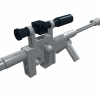
[MOC] Swingloader Mark Two
D3K posted a topic in LEGO Technic, Mindstorms, Model Team and Scale Modeling
After I built my first big MOC construction vehicle, this attempt at a different kind of loader, some nine months ago (boy, time sure flies), I've been wanting to redesign it, implementing techniques and mechanisms I have learned since then, to make a better functioning, better looking, more professional build, without cutting so many corners as I did the last time. So without further ado, I present to you THE SWINGLOADER (mk II) Firstly, I had a pretty good idea in my head of how to make the setup with the PF motors, and stack the four functions I wanted on top of each other in as small a space as possible. This is the first try, which turned out okay, but neede some minor redesign during the course of the project: In the final version the top two motors are PF-L motors, that operate the lifting an tipping of the bucket (axles 2 and 3 from the top). The two lower motors are PF-M. One controls the two small LA's for turning the machine, and the other controls the turning of the digger (uppermost axle) The lowermost axle is of course the drive axle, driven by a PF-XL motor (not in this picture) Anyway, here is a couple of detailed model images and explanations: The first two shows pretty much every axle, gear, actuator and motor in the model (yes, the two top motors are IRL PF-L motors) This is the final setup I used, and as far as I can tell, is completely accurate to the final model. Here follows some pics of the individual functions First, the drivetrain and steering: The portal axle reduction gives it a nice and slow speed, but it can be increased both there, and from the motor and down to the axle. The twin small LA's gives it a nice and accurate steering (thanks again, jorgeopesi ), although I would have liked it a bit faster Also, I managed to implement a simple mechanism for a functional sttering wheel : It turns ~90 degrees to either side as the loader articulates Next up is a representation of all the three functions that go to the front: Swinging: Lifting: Tipping: And after all that was figured out, I just needed to build a shell around the thing and but on some wheels! So here it is as it stands today: TA-DAAAA: As you can see, I opted for a much smaller type loader, more akin to the ones you see on construction sites in the city and stuff, and maybe closer to the real SwingLoader brand of swinging loaders It might from the above picture seem like there is a lot of free space from the front of the loader to the bucket.. ...but this is why it has to be like that: This time around, finding a working linkage geometry didn't take nearly as long as last time (even though the entire digger is built from scratch). As you can see on the next picture, it really does tip nicely when on top The battery compartment opens like this, for easy battery replacement: And the doors open up like this, to reveal a IR-receiver/uncomfortable seat for the driver. Second to last, here is the mandatory under belly shot, nothing to fancy about it ...except for the fact that I now see I forgot to put in two 3L friction pins to attach the two yellow 3x5 L-shaped liftarms And maybe the setup for of the rear pendular suspension! I almost forgot about that Making it with two small turntables makes it extremely strong, both when it comes to supporting weight, and stress in the longitudinal direction! This is actually a key factor to the rigidity of the entire rear of the loader! :thumbup: And lastly (well almost, anyway), the tiny tiny tiny detail that makes me loose my sleep: The transmission of power to the lower axle here, as you can see, happens via a part that doesn't exist. That is the 24 tooth end of a 4L differential, that I had to sever from the rest of its body, to keep the lowermost gear from coming ever so slightly in contact with the small LA's when the loader is turning to either extreme. The setup works almost as smoothly with these replaced by 16 tooth gears, but just not quite... So to sum it all up: -Driven 4WD by PF-XL motor -Steered by PF-M motor, via two small LA's -Turning of the digger by PF-M motor, worm gear on turntable -Lifting by PF-L motor, via two LA's -Tipping by PF-L motor, via one LA -Sixth channel open for powered accessories (you can see the output in the last image) -Easy access battery box through openable engine cover -Strong pendular suspension on the rear axle -Four PF-LED lights -Openable doors to the operator's cabin -Adjustable mirrors -Unfortunately no PF-seatbelts for the driver this time All in all I am very pleased with the result, and will try to make a video as soon as possible to show off the functions! And as a final feature, I built a crane attachment, similar to the ones I've seen in pictures like this: Here it is, folded as compactly as possible: And here it is fully extended: As you can maybe spot from the above image, the crane and loader is ready to accept a powered winch somewhere, but I haven't gotten around to designing one that is easy on the eye. This is the reason I put the output from the sixth channel in the cabin, for future additions. And here it is lifting a sort of I-beam: Pheew There you have it! I think I covered most of it, but feel free to post questions, critisism, praise and suggestions on improvements! As I mentioned, I will do my best to make a video of it in action! Thanks! -
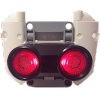
[MOC] Underground Mining Loader Motorized
dagupa posted a topic in LEGO Technic, Mindstorms, Model Team and Scale Modeling
Hello to everyone. I'd like to present a new project. I'm building an Underground Mining Loader. The idea came to me two years ago when Lego released the set Mine Loader (42049). By the time, I was expecting this to be the flagship model (1H) of that year, but it turned out to be a medium-size model. So I built my own. I took parts mainly from my Volvo Loader (42030) and built a version with a much lower profile. The result was ugly but functional. It's being on a corner getting dust. A couple of weeks ago I took this Moc apart and I'm rebuilding it from scratch. I'm not showing the "original" because it's really ugly. I hope I can make a decent model, something between good-looking and functional. Although most of the ideas come from the previous Moc, the "improved version" it's proving to be a difficult job. I think it would take a couple of weeks to finish the improved version. Here're some pictures from the first part. I'm happy with the results. I think 1/5 of the job is done. Disclaimer: I'm not trying to replicate a specific machine, but I have taken inspiration from the Caterpillar portfolio Thank you for your time. ****Pictures of the final model**** Lateral access to motor. For maintenance purposes, I guess. Hardly noticeable IR receivers ;) Easy access to motor. Cabin with chair and control panel. No floor. Easy access to battery and cables. You can also accommodate the rechargeable battery.- 37 replies
-
- mining
- underground
-
(and 3 more)
Tagged with:
-
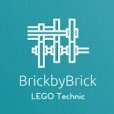
[WIP] Backhoe Loader- 42054 C model (Finished!)
BrickbyBrickTechnic posted a topic in LEGO Technic, Mindstorms, Model Team and Scale Modeling
Another 42054 C model. It'll have 3 power functions, and at least 4 manual functions. The front will have a grabber like in @M_longer's C model, though without any function: -Front stage 1 (powered) -rotation rear excavator (powered) -rear excavator stage 1 (powered) -front stage 2 (manual) -rear excavator stage 2 (manual) -HoG steering (manual) -opening doors CURRENT STATE: Here are some pictures: Leave a comment! More progress soon. BrickbyBrickTechnic -

[MOC] Backhoe Loader- 42054 C model
BrickbyBrickTechnic posted a topic in LEGO Technic, Mindstorms, Model Team and Scale Modeling
Hey everyone, Presenting what will most likely be my last model for 2017: The backhoe loader. It features 3 motorized function and 5 manual functions. Here's a video: Here are some pictures: Thanks for watching/reading! As always, comment and criticism is much appreciated. BbBT -
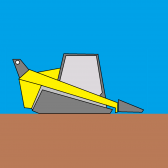
(C model)(42054) Mini Track Loader
Aventador2004 posted a topic in LEGO Technic, Mindstorms, Model Team and Scale Modeling
Hi everyone! My first of a few c models from my claas, I made a small Mini Track loader, using 300 parts maybe. I will be making more c models, maybe larger ones. It has: Smooth liftarm tracks Arm movement Bucket movement Cabin Control sticks Rear engine cover opening Engine removable I had a lot of fun fiddling with it, and looking at it. I hope you like it too. I also got a new backdrop for 69 cents! Tell me if you like the new backdrop! How is it, and tell me anything to improve! -
REVIEW - 42030 - VOLVO L350F WHEEL LOADER INTRODUCTION The Nuremberg Toy Fair is always an exciting event when it comes to revealing new LEGO sets. This year was no exception. We finally got to see visuals of the upcoming Technic Flagship. This time LEGO teamed up with Volvo to create an impressive version of the Volvo L350F Wheel Loader. In this review we will find out how TLG's interpretation compares to the actual Wheel Loader and whether it's worth the whopping 220 euro you need to fork out to own this bad boy. The designer behind this model is Uwe Wabra, who has designed other great models like the iconic 8258 Crane Truck and the 8285 Tow Truck. It took him about eight months to design the Volvo L350F. Volvo Spirit Magazine "The Nuremberg Toy Fair in February saw global toy giant the LEGO Group unveil its latest flagship model from LEGO®Technic. With 1,600 individual pieces and the largest individual element ever created for the brand, the Volvo L350F wheel loader is not simply one of the company’s 2014 star performers – it is just as impressive as the real-life machine it is based upon." Read more... Volvo Press Release Volvo Construction Equipment and LEGO® Technic have joined forces to create a miniature remote-controlled L350F Wheel Loader in Volvo livery that not only drives, steers, lifts and loads just like the real thing it also converts into an equally impressive hauler. Read more... Credits Before we continue I would like to thank LEGO for providing the set and the possibility to publish this Exclusive review. Furthermore I would like to thank Volvo and Superkalle (our LDD Moderator) for giving me some very useful Volvo insights. All images can be clicked for hi-res versions. SET INFORMATION Number: 42030 Title: Volvo L350F Wheel Loader Theme: Technic Released: 2H 2014 Part Count: 1636 Box Weight: 3541 gr Box Dimensions: 57,5 x 47,8 x 12,0 cm Set Price (MSRP): 219.99 EUR DE / 169.99 GBP / 249.99 USD Price per Part: DE 0.134 EUR / UK 0.103 GBP / USA 0.153 USD With a price tag of almost 220 euro, this is the most expensive Technic flagship to date. The average price of 0,134 euro part part immediately makes clear that this is no ordinary Technic set. A high price per part normally indicates that a set has lots of special parts, like motors and other Power Function elements. THE BOX The box measures 57,5 x 47,8 x 12,0 cm which is equal to the height and width of the box for the 42009 Mobile Crane Mk II. The main difference is that this box measures a depth of 12 cm instead of the Crane's 9 cm. The additional 3 cm is necessary for housing the new Bucket, which will be discussed later. The difference in weight between the Crane Mk II (4172 gr) and the Volvo (3541 gr) is about 631 gram which is not that much, taking in account that the Crane has 970 pieces more (2606) than the Volvo (1636). One thing is sure; this box will leave little room for other Christmas presents under the tree later this year! FRONT SIDE The front of the box shows an impressive picture of the model, no surprise here. Like with most bigger models the size of the model is printed on the box. When finished, this model will measure a length of 58 cm and a height of 38.5 cm. The front also shows a Power Functions section stating it has "fully remote-controlled driving and digging functions.". The bottom right shows the large number of Power Function components this set contains. BACK SIDE The back side shows the B-model which is the Volvo A25F Articulated Dump Truck. The preliminary image of the back side explicitly showed an iPad with the digital building app. The iPad didn't make if to the final box, which makes you wonder whether the iPad instructions won't be available at all. Could it be that the size of the B-model is pushing the boundaries of building with the iPad app?! Another possibility is that the iPad app will be available later than the release of this set. INSIDE When opening the flip-up cover some cool facts of the real Volvo are revealed, together with a picture of the Power Functions and a demonstration of the manual functions. There's also a picture to emphasize the green engine. Name: L350F Horse Power: 540 HP (397 kW) Weight: 52 metric tons Bucket Volume: 6,9 m3 INSIDE COVER The inside of the cover is devoted to the Power Functions. Again all the PF elements are shown. Two remote controls are used for operating the boom and driving the vehicle. It's not necessary to switch between these functions. Three small pictures explain how the Power Functions are controlled. SIDE The side of the box shows the actual size of the bucket, which measures a width of 18,2 cm! Now it's clear why the box needed to be bigger than last year's flagship. CONTENTS OF THE BOX The box contains: 14 Bags 1 Booklet 1 Sticker Sheet 1 Bucket 4 Yellow Rims 4 Tires 9 Power Functions Components BAGS The box contains 14 bags in varying sizes. Business as usual so far. BOOKLET One of the first times we encounter a single booklet for a set this size. When you have built the 42009 Crane you might have seen this before. The first production runs of the Crane included 6 booklets, which later changed into a single booklet. I really appreciate a single booklet, since it more or less reflects the size of the model. STICKER SHEET Not only does the sticker sheet contain stickers for the A-model, but it includes stickers for the B-model as well, which is pretty unusual. This does mean that you either need to remove the A-model's stickers when you are building the B-model, or buying a few extra parts dedicted to the B-model's stickers. HIGHLIGHTED PARTS This section describes the unique and/or highlighted parts. We'll start with the massive Bucket which obviously is the star of the show! BUCKET This type of bucket is called a Spade Nose Rock Bucket. It's primary use is lifting blasted rock and the spade nose is to obtain maxium penetration when digging into the gravel. On a real bucket, the teeth are interchangeable, because they wear out. Volvo’s range of buckets is very comprehensive, encompassing buckets for all types of jobs and all types of materials; from rock and stone to ore and wood chips. Type: Spade Nose Rock Bucket Capacities: 1,8 – 7,5 m3 Applications: Hard and stony material, shot rock and where good penetration is needed. Options: Pin/hook-on, bolt-on edge, welded teeth & segments. Using a real Volvo with spade nose bucket, you could easily haul over 200 LEGO Volvo boxes and probably more than 300 LEGO Volvo models. The following two images show a comparison in size with the Bucket formerly known as the Big Bucket. The older big bucket is used in 8265 Front Loader. As you can see the previous version can easily fit inside the Volvo's Spade Nose Bucket. Makes you wonder how big the finished model will be!! The distance between the upper and lower holes for attaching the bucket is 5L, where this is 3,5L for the older bucket. POWER FUNCTIONS COMPONENTS The number of Power Functions components is unprecedented. No other Technic set has such a vast array of PF components. Admittedly, the 8043 Excavator also has 9 PF elements, but that set only contains M-motors. 1x Battery Box 2x Infrared Receiver 2x Remote Control 1x M-motor 1x L-motor 1x XL-motor 1x Servo motor All of the four available types of PF motors are included in this set. The new L-motor and Servo Motor are found in the 9398 Crawler and it's Exclusive Edition counterpart, the 41999 Crawler Exclusive Edition. The L-motor is also available in the beforementioned Crane Mk II. What's special about this set, is the return of the XL-motor. This motor was about to become a rare PF motor, since it hasn't been used in an official set since 2009. The last Technic set it appeared in was the 8258 Crane Truck (also by Uwe Wabra). What I really like about the XL-motor is it's coasting behavior. Coasting is performing a natural deceleration of a motor when the power is removed. In simple words; the motor doesn't immediately stall after you stop applying power to it. This results in fluent vehicle deceleration. The L-motor doesn't coast which results in the vehicle abrubtly stopping. I very much dislike this shocky behavior on the crawler, so I am glad TLG used the XL-motor for propulsion. Although it had probably more to do with the torque (40 N.cm for XL vs 18 N.cm for L) than the coasting behavior. WHEELS For the first time we get to see the Wheel 56mm D. x 34mm Technic Racing Medium, 6 Pin Holes in Yellow, which is great for bigger construction vehicles. TIRES I was hoping the, so called, Unimog tires would make their way into an official flagship set at least once more. So I was glad to see TLG apparently had the same thought and used these great tires for the Volvo again. WHEEL AND TIRE ASSEMBLY Below is a picture of the complete wheel and tire assembly. ENGINE CYLINDERS Technic Engine Cylinders come in two variants, Cylinders with Side Slots and a newer version Cylinders without Side Slots. The newer version only got produced in light bluish grey, up until now. One of the characteristic features of Volvo machines is their green engine color, originating from the Penta Corporation. Volvo was founded in 1927 and the first engines were bought from Penta Corporation who made green engines, and so just shipped the same color to Volvo. In 1935 Volvo bought Penta (which became Volvo Penta, the marine division). The engines were continued to be painted green. All engines back then were petrol engines. Volvo's first diesel, VDA, was made in 1945. From the 1950's some engines were painted red, but mostly these were for Volvo Cars, and were petrol engines. As for production Diesel Engines in heavy machinery and trucks, they have always been painted green since the start. THIN LIFTARMS The Black Thin Liftarm 1x7 is not very special, but it doesn't appear in Technic sets that often. The Yellow Thin Liftarm 1x6 used to be pretty rare, since it was only included in the 8457 Power Puller. However, last year this part got reintroduced in the 42024 Container Truck. The Light Bluish Grey Thin Liftarm 1x5 with Axle Holes on Ends was introduced in Black in 2013. This is the first time this part appears in another color. AXLE AND PIN CONNECTOR The Yellow Axle and Pin Connector #6 - 90 degrees was last used in the Technic 8258 Crane Truck in 2009, until it made it's comeback in 2012 in the 5885 Triceratops Trapper. Just like the XL-motor Uwe Wabra is using this part again in a Technic set. PANELS Finally we can see a small selection of panels. Mostly old style Yellow Panel Curved 11 x 3 with 2 Pin Holes and a single Black Black Panel Curved 11 x 3 with 10 Pin Holes. PART LIST Here's the complete list for all 1636 parts. BUILDING EXPERIENCE Enough with the boring part...let's build a Volvo! CHASSIS You start building the chassis and after a few steps, the pendular rear axle is taking shape. The small turntable proves to be an asset to the Technic parts catalogue. Another useful part is the Steering Portle Axle, which is rapidly becoming the workhorse of big Technic vehicles. Ordinarily it's placed vertically to provide higher ground clearance, but as you can see, it can be used horizontally as well. Here you can see images of the front and rear sections, which will be joined a bit later in the build. The front and rear section joined together. The wheelbase does not reflect the size of the finished model. Here's a picture of the articulation mechanism of the vehicle. PF MOTORS The four motors are equally divided over the front and rear section. Because two of the motors (M and L) are placed in the front section, there's no need to transfer gears or axles from the rear section. Three (M, L and Servo) of the four motors are placed vertically, while the XL-motor is placed horizontally in the back. VOLVO D16E LAE3 ENGINE The Volvo D16E LAE3 is a straight six-cylinder high performance, low emission turbocharged diesel engine with direct injection, air-to-air intercooler and Internal Exhaust Gas Recirculation (I-EGR). The engine has a one piece cylinder head with four valves per cylinder one overhead camshaft. Furthermore, the engine has wet replaceable cylinder liners, replaceable valve guides and valve seats. The Engine with V-ACT (Volvo Advanced Combustion Technology) features split injection, optimized air handling and turbocharger with waste gate. High torque at low engine speed gives the engine its characteristic feature: quick response at low rpms, even under load. The three white Round Pin Connectors with Slot are the engines oil filters. Two of them are normal, high flow filters and the third one is a fine filter that is optimized to catch finer particles, but has a slower flow. When engine load is moderate and oil/lubrication need is also moderate, much of the oil is directed to the fine filter. When the engine is working at maximum, all oil is instead passed through the two normal filters. LOAD SENSING HYDRAULIC SYSTEM The L350F features an intelligent load-sensing hydraulic system. Two variable piston pumps provide exactly the flow rate and pressure required at any given moment in time, distributing the power where it’s needed, when it’s needed. When flow is not required in the hydraulic system, all engine power is diverted to the drivetrain. This provides smoother operation, lower fuel consumption, and more precise control of machine and load. You always get full power, regardless of revs. The LEGO version uses three Linear Actuators instead of an hydraulic system. NOTE I made an error placing the LA. The top LA in the picture below should be flipped, resulting in the attachment point being at the bottom instead of the top. Thanks to Jantjeuh for pointing this out. CHASSIS AND BODYWORK At this point the chassis and bodywork are almost finished. LOADER Z-BAR LINKAGE The L350F is a heavy duty, primary production loader intended for multi-shift, high production applications. High breakout force in the digging position, high lift capacity and fast hydraulic speeds are the essential requirements for a primary production loader. The Z-bar linkage is a field-proven, effective linkage in this loader size class. The refined geometry is the same for both standard and long boom and allows common bucket range with an open design. Below is an image of the Linear Actuators operating the Z-bar linkage. ROTATING LIGHT A small detail I particularly like is the small rotating light on the top of the cabin. Other models use a transparent 2x2 Round Brick which is way too big. This smaller version fits better! STEPS The image of the real Volvo on the inside of the box shows the steps on the left side of the vehicle, while they are mounted on the right side of the LEGO version. After some research I found out that the L350F used to have the steps on both sides of the cab, but it was not a safe solution for the operator when he had to climb up the steps into the cab with a lunch box. So late last year Volvo changed the design and eliminated the steps on the left side and made the steps on the rear fender standard. Another cool feature that Volvo included was the “remote door opener”, so as the operator approaches the machine, he presses the remote door opener and the door opens automatically and the entrance lights shine down on the steps for additional safety when climbing into the cab when it is dark. INFRARED RECEIVERS The infrared receivers have been placed nicely behind the cabin, hardly visible. Although the box states that V2 receivers are included, there is no V2 sign on the ones I found in my set. FINISHED MODEL It took me approximately 7 hours to finish this model. I reckon most of you will finish it in about 6 hours. FRONT VIEW The finished model looks stunning! It's really massive. Even though I love the looks of this model, I can't help wondering why TLG didn't make some wheel caps to fill the rims and make the wheels look more massive too. REAR VIEW The rear looks great as well. In this picture the battery box is clearly visible, but from a normal viewing angle, it's almost hidden from sight. BOTTOM VIEW Just as you would expect. Nothing out of the ordinary to see here. THE GAP The side view of the Volvo is one of my main concerns. While the rear section looks massive and lifelike. The front section looks unfinished, especially the part in front of the cabin. Also, the bottom of the first section of the boom could use some more bricks to make it look more immense, just like the real machine. PARTS LEFT Quite a few parts left, even three Axles (5L, 6L and 7L). Of course nothing the bucket can't handle! FUNCTIONALITY This model has quite a few functions. The main four functions are: Articulated Steering Driving Raising and Lowering the Boom Operating the Bucket Besides these motorized functions, there are some manual features. ARTICULATED STEERING Wheel Loaders typically use articulated steering. Articulated steering is a system by which a four-wheel drive vehicle is split into front and rear halves which are connected by a vertical hinge. The front and rear halves are connected with one or more hydraulic cylinders that change the angle between the halves, including the front and rear axles and wheels, thus steering the vehicle. This system does not use steering arms, king pins, tie rods, etc. as does four-wheel steering. If the vertical hinge is placed equidistant between the two axles, it also eliminates the need for a central differential, as both front and rear axles will follow the same path, and thus rotate at the same speed. Long road trains, articulated buses, and internal transport trolley trains use articulated steering to achieve smaller turning circles, comparable to those of shorter conventional vehicles. Articulated haulers have very good off-road performance. (Wikipedia) Steering is controlled by the Servo Motor. There was some disappointment in the community because the steering looked very jerky in the videos from the Nuremberg Toy Fair. I must admit I didn't like it either. The Servo Motor has two modes, on (in either direction) or off. This means there's no gradual steering mode, it's hard left, hard right or straight on. This is illustrated in the images below. Playing around with the LEGO model, I experienced that the steering indeed is a bit jerky, but for playability it isn't as bad as it seems. A solution with Linear Actuators would have been more realistic. But since the Volvo basically is a kids toy, I can accept the jerky steering. LIFTING THE BUCKET The boom and bucket are also operated using Power Functions. Both the boom and the bucket are operated with the remote and both functions are working properly at a nice speed! LIFTING LOAD The Volvo is powerful enough to lift it's own weight. That no surprise, since it can lift up to 1 kg of load!! ENGINE BAY The engine bay can be opened from various sides for maintenance, like changing the oil filters. Opening the back reveals the big green 6 cylinder engine with the cooling fan. The D16E engine has a hydraulically driven, electronically controlled cooling fan and intercooler of the air/air type. The system not only results in quieter operation, but also lowers the fuel consumption. BATTERY REPLACEMENT Replacing the batteries in the battery box is fairly easy. Remove the two axles with red bush and unlock the black long pin with stop bush and you can easily detach the battery box from the vehicle. COMPARISON WITH 8265 Inevitable is the comparison with it's predecessor; the 8265 Front Loader. For a non-flagship set, the 8265 already was an impressive Front Loader. The following pictures show how big the Volvo actually is. It trumps the old Front Loader in every way. SUMMARY The LEGO Volvo is nothing short of spectacular! I might even go out on a limb by claiming that this is one of the coolest LEGO Technic models....ever! If not THE coolest! True, there are better looking models. True, there are technically more advanced models. However, this models combines a lot of factors, like playability, looks and the sheer size is stupendous. Adding the Volvo brand and stickers is the icing on the cake. My all time favorite Technic model is the 8043 Motorized Excavator, since this model combines, looks, functionality and playability. The Volvo shares the exact same properties, but it contains a lot more cool parts than the Excavator, a wider variety of Power Functions for instance, a gargantuan unique bucket and Unimog wheels. In all fairness; reading my own summary, I can only come to the conclusion that I like the Volvo even more than the Excavator! Even though the price is pretty steep, I would definitely recommend getting this set. PROS Offers lots of playability No need to switch between functions Finished model is massive LEGO Volvo looks like a genuine L350F Gargantuan unique bucket Unimog wheels CONS The gap in front of the cabin Front section looks unfinished compared to the rear section Omission of wheel caps to make the wheels look more massive Jerky steering due to servo motor (minor con) SCORE Design 9: Stunning looks and the sheer size is impressive. Volvo stickers are the icing on the cake. Build 8,5: Very enjoyable build, but nothing too spectacular. Functionality 9: Four different fully remote controlled functions, combined with some manual functions. Playability 9: Fully remote controlled and no need to switch between functions. Parts 10: It doesn't get any better than this. Entire range of PF motors (including XL Motor), Unimog Tires, unique Yellow Rims and much more! Value for Money 8,5: Although the price is pretty steep, you get a lot of bang for your buck. 9 Bucket Size Does Matter! Hope you enjoyed it! Thanks for reading and please rate this set at the top of this topic!
-

Mini Track Loader
Aventador2004 posted a topic in LEGO Technic, Mindstorms, Model Team and Scale Modeling
Hi there! my latest moc is a mini track loader. it has a funtioning front blade, tilt, lift, and a rear cabin door. This was built to be like a lego set, and use color vomit in areas. I may make a b model, to make it like a real set. My neighborhood is also getting repaved, and they were using one, so it works. enjoy, and comment thoughts. instructions and parts list uploading. here https://drive.google.com/drive/folders/0B-2NrU9MqJ-WSXpHR3VjY2p5R1k?usp=sharing


